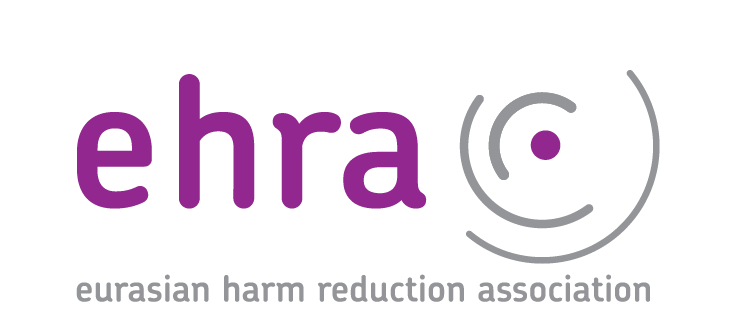Recommendations for transitioning countries
- 01.04.2016 06:58
- Post Views: 869
Many donors and countries are in the process of transitioning away from reliance on external funding in favour of greater domestic investment for HIV. This process, in itself, carries grave risks to the funding for, and implementation of, HIV programming, especially for key populations. Recent experiences in Central and Eastern Europe provide examples of this.
But planning and implementing transitions are not straightforward. There are many questions about when countries should transition, how they should do so, and whether or not donor exits will leave critical gaps in the response, especially for key populations.
This policy paper suggests that transitions need to be based on the following sets of principles and is structured in 3 parts, based on them:
(1) transparency and predictability,
(2) good practice and
(3) human rights.
The Key messages of the paper, according to those principles, are:
To aid in the transparency and predictability of transition processes, we need:
- Systematic transition criteria: A clear set of criteria needs to be developed for assessment of a country’s transition preparedness.
- Publicly available transition schedules: Transition should be discussed between donors and representatives of the country to determine start and end dates and duration of transition.
- Coordinated donor decisions: Donors need a clearer mechanism to communicate their transition plans about a particular country with each other.
“Good practice” transitions require:
- Time: Not only is a period of several (5-10) years required, but also a phased roadmap to achieve various specified financial and operational targets is needed.
- High-level political commitment: Without commitment at the highest political levels, transitions can be easily derailed by changes in staffing, in political parties, in economic circumstances, etc.
- Country ownership: Aligning donor-funded projects with national policy as well as with the national context is important if projects are to be absorbed by domestic bill-payers.
- Built-in monitoring and evaluation: M&E is needed to assess progress against the roadmap targets, as well as to track changes to the epidemic, issues affecting the testing and treatment cascade, access by key populations to essential services, and other important considerations.
Transitions that promote and protect human rights are most likely to maintain and expand access to essential HIV services by key populations through:
- Funding mechanisms for NGOs, which must be in place and working effectively to enable access to sufficient funds for key population service delivery programs.
- High-level political engagement, specifically related to the costs and benefits of excluding or including specific key populations in national HIV responses.
- Improved in-country capacity for advocacy based on data collection and analysis by NGOs or community-based networks representing each relevant key population.
- Increased capacity of NGOs to demonstrate specifically the level and types of activities they will undertake in the HIV prevention and treatment cascade to justify the sustained allocation.
- Ensured funding for police, security, and criminal justice reform programs because these structural elements have the strongest influence in most countries over access of key populations to needed services.
You can look through and download the full text of the paper here.
Related News
Global Fund funding opportunity – COVID-19 Response Mechanism
The COVID-19 Response Mechanism (C19RM), approved in April 2020, authorizes US$500 million in funding in addition to grant flexibilities. C19RM can be used across the three diseases and the health system, even if a country only has a single Global Fund grant for one component. The CCM will assess the most urgent needs and direct […] Read moreCOVID-related Funding Opportunities for Civil Society Working on HIV, TB, Malaria, Gender and Human Rights
We would like to share with you the information about few COVID-related Funding Opportunities available for Civil Society Working on HIV, TB, Malaria, Gender and Human Rights in EECA. Post Views: 3,185 Read moreGlobal Fund Donors Pledge US$14 Billion in Fight to End Epidemics
LYON, France –In an unprecedented show of global solidarity, donors at the Global Fund’s Sixth Replenishment Conference pledged US$14.02 billion for the next three years – the largest amount ever raised for a multilateral health organization, and the largest amount by the Global Fund. The funds will help save 16 million lives and end the epidemics […] Read moreServices for migrants and refugees from Ukraine – HIV/TB care with a focus on key populations
Due to the increasing flows of refugees from Ukraine because of Russia’s invasion of Ukraine, the EECA Regional Platform created a spreadsheet to fill contacts details of face-to-face and online services for refugees and migrants (with a focus on HIV/TB care and key population groups).
Regional Platform – EECA
This web-resource is a part of new regional communication and coordination project “Regional Civil Society and Community Support, Coordination and Communication Platform - EECA”, implemented by Eurasian Harm Reduction Association (EHRA).
Tags
See also
-
EECA’s Regional Platform monthly Newsletter #17, October 2025 21.10.2025 11:18
-
Technical support: Global Fund’s CE TA Program 2024 20.10.2025 09:28
-
EECA’s Regional Platform monthly Newsletter #16, September 2025 18.09.2025 16:23








